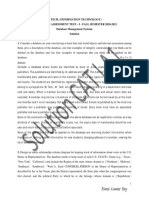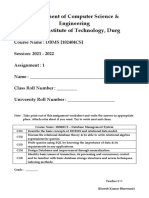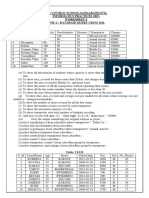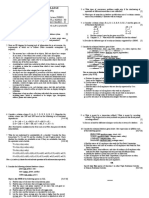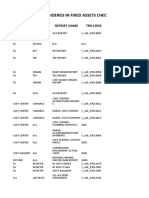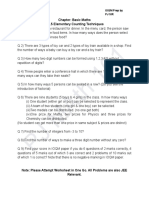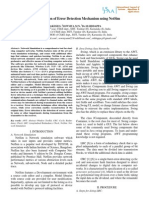0% found this document useful (0 votes)
8 views8 pagesDBMS Lab LP
The document outlines the DBMS and Web Technologies Laboratory course (MMCL106) at RV Institute of Technology & Management for the academic year 2024-2025, detailing its objectives, outcomes, and a list of experiments. It includes information on prerequisites, contact hours, credits, and evaluation methods for practical examinations. The course aims to equip students with skills in SQL queries, database design, and normalization techniques through hands-on experiments.
Uploaded by
SATHYABAMA MADHANKUMARCopyright
© © All Rights Reserved
We take content rights seriously. If you suspect this is your content, claim it here.
Available Formats
Download as PDF, TXT or read online on Scribd
0% found this document useful (0 votes)
8 views8 pagesDBMS Lab LP
The document outlines the DBMS and Web Technologies Laboratory course (MMCL106) at RV Institute of Technology & Management for the academic year 2024-2025, detailing its objectives, outcomes, and a list of experiments. It includes information on prerequisites, contact hours, credits, and evaluation methods for practical examinations. The course aims to equip students with skills in SQL queries, database design, and normalization techniques through hands-on experiments.
Uploaded by
SATHYABAMA MADHANKUMARCopyright
© © All Rights Reserved
We take content rights seriously. If you suspect this is your content, claim it here.
Available Formats
Download as PDF, TXT or read online on Scribd
/ 8




